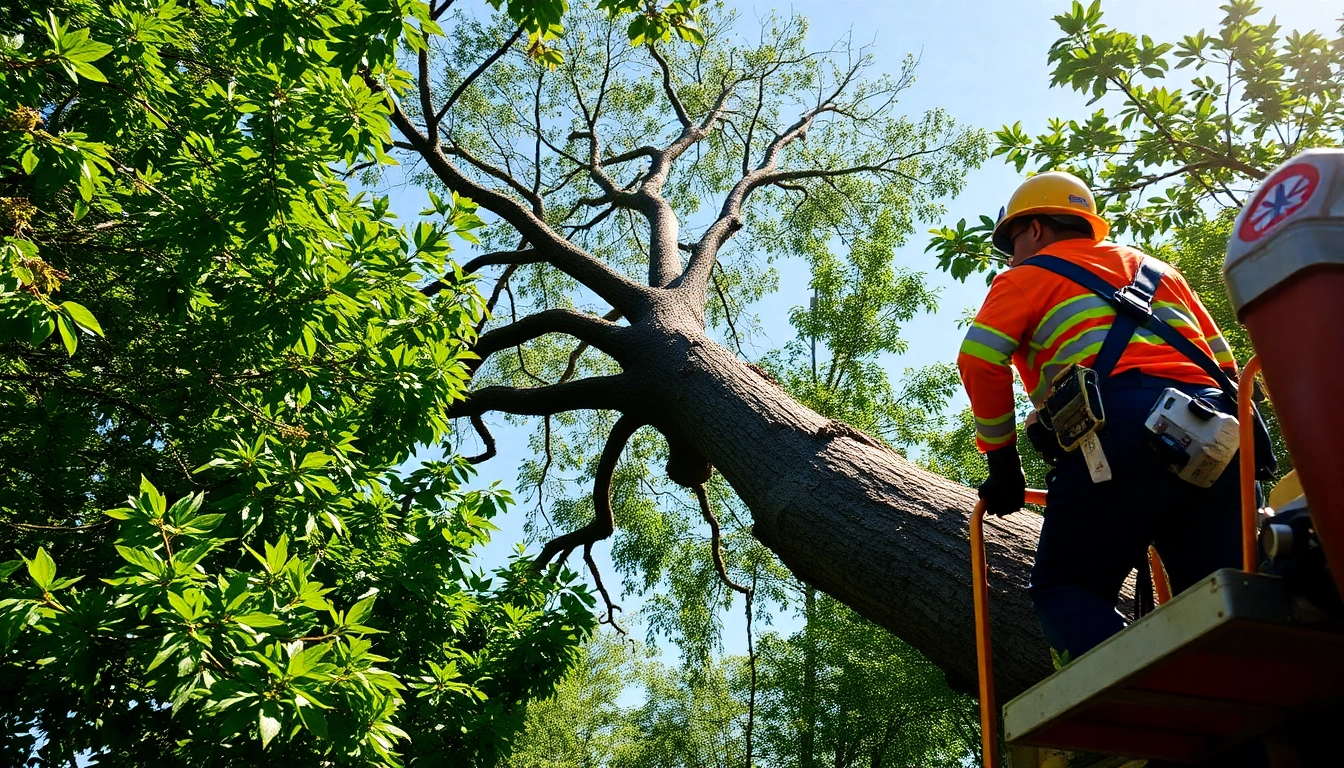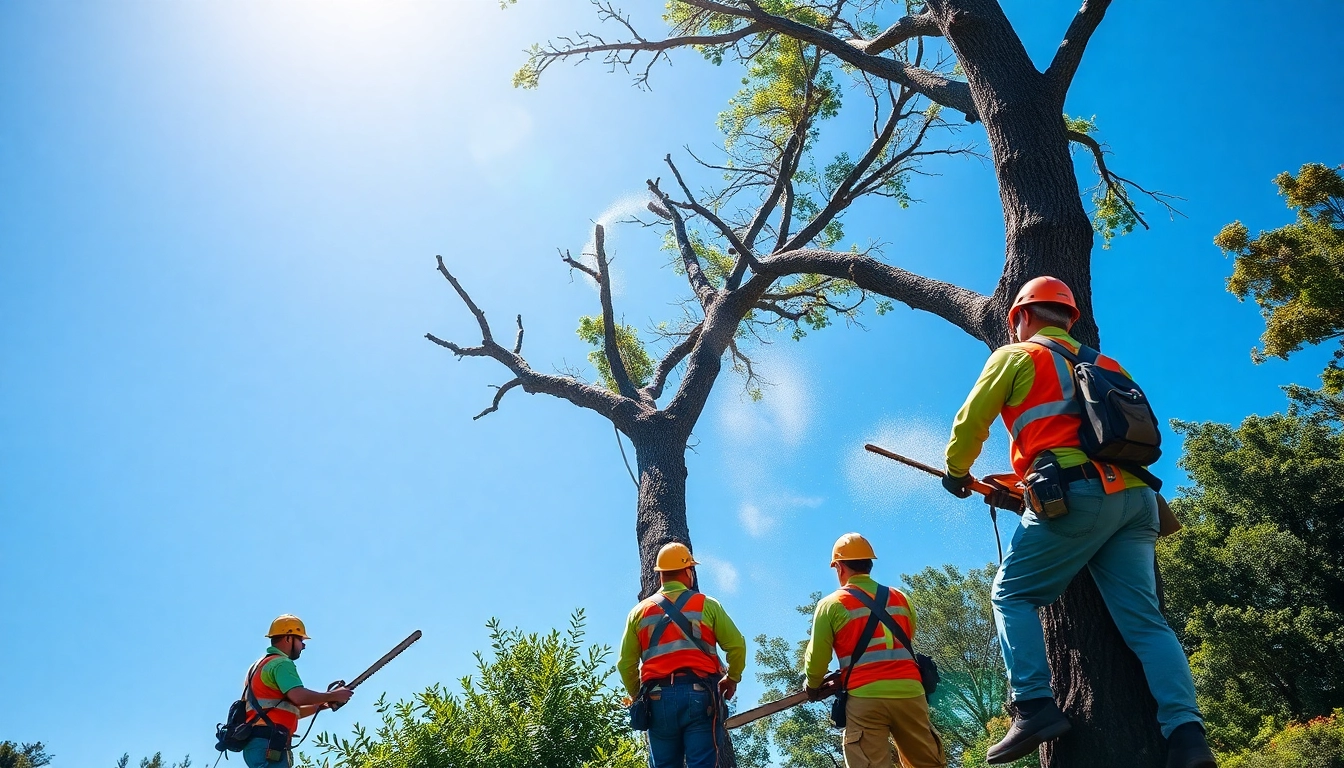Understanding Emergency Tree Services
When a storm strikes or an unexpected situation arises, our first instinct is often to ensure our safety and the safety of our loved ones. However, one critical aspect that frequently gets overlooked is the condition of our surroundings—specifically, our trees. Emergency tree services play a vital role in maintaining not just the aesthetics of our environment but our safety as well. Understanding what constitutes an emergency tree situation can save lives and property alike. In emergencies, timely intervention is crucial, making professional emergency tree service an important consideration.
What Constitutes an Emergency Tree Situation?
An emergency tree situation can arise from various circumstances, most commonly caused by natural events such as storms, hurricanes, or heavy snow. A tree might be categorized as a danger if it poses an immediate risk to lives or property because it has fallen, is leaning precariously, or has split significantly. Additionally, trees diagnosed with severe diseases or infestations may require urgent attention to prevent them from becoming hazardous to their surroundings.
The Importance of Quick Response in Emergency Tree Service
The need for rapid response in emergency tree service cannot be overstated. Trees that have fallen during storms can obstruct roads, cause power outages, or even damage homes. A quick response not only mitigates further risk but can also be essential for the emotional and physical well-being of those involved. Moreover, a delayed response can result in increased repair costs and complicated legal claims if the tree damage affects neighboring properties.
Common Types of Emergencies Requiring Tree Services
There are several scenarios that necessitate emergency tree services. Some of the most common situations include:
- Storm Damage: High winds, torrential rains, and snow accumulation can wreak havoc on trees.
- Tree Falling: A tree falling on a home or vehicle can result in serious damage and requires immediate action.
- Leaning or Cracked Trees: Trees that have developed severe lean or visible cracks can fall at any time, presenting a threat to safety.
- Pest Infestations: Trees infested with pests such as bark beetles may weaken and fall suddenly, thus requiring interventions.
- Diseased Trees: Trees that are severely diseased may need to be removed to precautionarily safeguard surrounding plants and structures.
How to Identify When to Call for Emergency Tree Service
Properly assessing your trees and understanding when to call for emergency tree service can make a world of difference in ensuring safety and quick remediation. Some key indicators can help you identify a potential emergency situation.
Signs of Tree Danger: Leaning, Cracks, and Decay
One of the first signs that a tree may pose a danger is its physical condition. A visibly leaning tree, particularly if it leans toward a building or walkway, requires immediate evaluation by a professional. Additionally, cracks in the trunk or limbs can indicate structural weakness. Fungal growth or decay around the base of the tree can also suggest that it is compromised and may need to be removed.
Assessing Damage After a Storm
After severe weather, it’s crucial to assess your property for any tree damage. If you notice debris or fallen branches, inspect the trees for signs of instability. A tree that has uprooted, split, or is sagging can lead to extensive issues. Consulting with an expert can provide clarity and professional recommendations to ensure safety.
When Professional Help is Necessary
It’s advisable to seek professional help in several circumstances. For instance, if a tree is blocking access to emergency services or has fallen on power lines, trained professionals have the expertise and equipment necessary to handle such hazardous conditions safely. Never attempt to climb or cut a dangerous tree yourself. A qualified emergency tree service can manage the challenge effectively and securely.
Choosing the Right Emergency Tree Service Provider
The decision to call in emergency tree services isn’t just about urgency; it’s also about quality. Choosing the right provider will ensure the situation is handled properly, minimizing risks to your property and loved ones.
Key Qualities of a Dependable Tree Service Company
When selecting an emergency tree service provider, keep an eye out for essential qualities such as:
- Experience: A well-established company will typically have a history of successfully managing tree emergencies.
- Certifications: Look for companies that have professional certifications, indicating that they follow industry standards.
- Insurance: A reliable service should have liability insurance, protecting you from potential costs due to injury or property damage.
- Safety Protocols: Ensure that the company follows rigorous safety protocols to protect both workers and your property.
Questions to Ask Before Hiring
Before you decide on a service provider, it is vital to ask the following questions:
- What are your qualifications and certifications?
- Do you have liability insurance and workers’ compensation?
- Can you provide references or testimonials from previous clients?
- What is your response time to emergencies?
- What is your estimate process? Is it written?
Reading Reviews and Checking Certifications
In today’s digital world, checking online reviews and testimonials can provide insight into a company’s reputation. Websites like Yelp, Google Reviews, and the Better Business Bureau can offer valuable feedback from previous customers. Additionally, confirm that the company is certified by relevant organizations, such as the International Society of Arboriculture (ISA) or your local arborist association.
Emergency Tree Service Procedures
Once you’ve engaged an emergency tree service, it’s helpful to understand the procedures they’ll follow to ensure the job is done correctly and efficiently.
Initial Assessment and Safety Considerations
The first step any professional will take is an initial assessment of the situation at hand. They will evaluate the structural integrity of the tree, surrounding environments, and potential hazards. Safety measures, such as establishing a perimeter and ensuring no one is in harm’s way, are essential during this initial phase.
Tree Removal Techniques for Various Situations
Depending on the condition of the tree and the surrounding areas, professionals may use different techniques:
- Crane Removal: For large or dangerous trees that are located near structures, cranes may be needed to safely maneuver the tree sections.
- Climbing and Rigging: Arborists may need to climb the tree to cut it down piece by piece, minimizing the risk of damaging nearby property.
- Winching Techniques: In situations where the tree is leaning, winching techniques may be required to safely guide the tree down.
- Chainsaw Operation: Proper chainsaw techniques are crucial for controlled cuts and avoiding injury during removal.
Post-Removal Cleanup and Restoration
Once the tree has been removed, the work is not done. Quality emergency tree service providers will offer post-removal cleanup, removing debris and ensuring no safety hazards remain. Additionally, they should advise on any landscaping restoration or soil remediation efforts that may be needed after the removal to maintain the health of your landscape.
Preventive Measures to Avoid Tree Emergencies
While emergencies can arise unexpectedly, implementing preventive measures can help mitigate risks and keep your trees healthy. Proactive care can save you significant hassle down the road.
Regular Tree Maintenance Practices
Regular maintenance is vital in keeping your trees sturdy and healthy. Practices such as pruning, inspection for diseases, and removing dead branches can prolong the life of your trees and reduce the potential of emergencies. It is ideal to schedule annual inspections with a certified arborist to check the overall health of your trees.
Understanding Seasonal Risks and Preparations
Different seasons present their own unique risks. For instance, heavy snowfall can weigh down branches, and high winds in spring or fall can uproot trees. Being aware of your specific geographic area’s seasonal risks allows for timely actions, such as maintaining tree health through proper watering during dry spells or reinforcing weak branches before stormy weather.
Community Resources for Tree Health Education
Many communities offer resources related to tree health, local flora, and landscape management. Engaging in workshops or educational programs can provide valuable knowledge to help you understand how to nurture your trees and recognize signs of distress before they escalate into emergencies.



